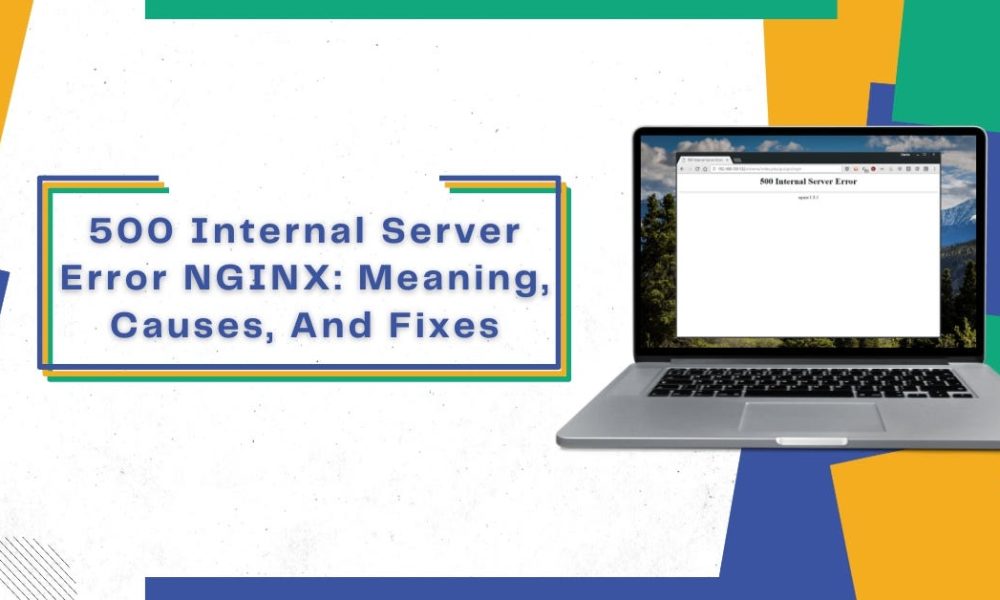When browsing the web, we’ve all encountered different 500 Internal Server Error HTTP error codes. One of the most common ones is the “500 Internal Server Error.” In this article, we’ll delve into what exactly this error is, its causes, and how to troubleshoot and prevent it when using the Nginx web server.
What is a 500 Internal Server Error?
The 500 Internal Server Error is an HTTP status code that indicates something has gone wrong on the server, but the server is unable to specify the exact problem. It’s like a generic error message. When this error appears, it can be frustrating for both website administrators and users because it doesn’t provide much information about what’s gone awry.
Causes of 500 Internal Server Error
This error can occur due to a variety of reasons, making it essential to understand the root causes to resolve it effectively. Let’s explore some common triggers:
Server Misconfigurations
- Incorrect Configuration Files: One of the primary reasons for a 500 error is misconfigured Nginx files, such as nginx.conf. A single typo can disrupt the entire server.
- Syntax Errors in Configuration: Improperly written Nginx configuration files can lead to syntax errors, causing the server to fail.
- Resource Limitations: When server resources are stretched to their limits, it can result in the server being unable to respond to requests, leading to a 500 error.
Faulty Scripts and Applications
- Problems with PHP: If your web application relies on PHP, issues with PHP scripts can trigger the error.
- Overloaded Databases: A heavy database load or misconfigured database connections can lead to this error.
- Incompatible Modules: Incompatibility between Nginx and installed modules can result in a server error.
Permissions and Ownership Issues
- File and Directory Permissions: Incorrect file and directory permissions can restrict access, leading to server errors.
- Incorrect User Ownership: Running Nginx with incorrect user ownership can cause issues.
- SELinux or AppArmor: Security policies such as SELinux or AppArmor might block Nginx from functioning correctly.
Common Scenarios Leading to Nginx 500 Error
In real-world scenarios, you might encounter the Nginx 500 Internal Server Error in several situations:
- When accessing a web page that contains faulty code.
- During high traffic spikes, especially if the server resources are inadequate.
- After making configuration changes to Nginx or your application.
- When a script or application runs into errors and crashes.
Troubleshooting the Nginx 500 Error
Resolving the Nginx 500 error involves meticulous troubleshooting. Here are some steps to help you identify and fix the issue:
- Check the Error Log: Begin by inspecting the Nginx error log, which can provide more details about the error’s origin.
- Examine Configuration Files: Review your Nginx configuration files for any syntax errors, typos, or discrepancies.
- Analyze Resource Usage: Monitor your server’s resource usage to ensure it’s not overloaded.
- Test Scripts and Applications: Check your scripts and applications for errors or compatibility issues.
Preventing and Handling Nginx 500 Errors
Prevention is always better than cure. Here are some best practices to prevent Nginx 500 errors and strategies to handle them effectively:
Best Practices for Nginx Configuration
- Regularly update Nginx to the latest stable version to benefit from bug fixes and enhancements.
- Maintain a backup of your Nginx configuration files so you can quickly revert to a working setup if needed.
- Implement a robust testing environment to check configuration changes before applying them to the production server.
Monitoring and Logging
- Continuously monitor your server’s resource usage and traffic patterns to identify issues early.
- Enable detailed logging in Nginx to capture information that can help diagnose problems.
Backup and Recovery Strategies
- Regularly backup your website’s content and databases to safeguard against data loss.
- Implement a recovery plan to quickly restore your website in case of a catastrophic failure.
In conclusion, the 500 Internal Server Error with Nginx can be a frustrating experience, but with proper understanding and preventive measures, it can be managed effectively. By following best practices in server configuration, monitoring, and backup strategies, you can ensure a smoother web hosting experience.
FAQs
1. What should I do when I encounter a 500 Internal Server Error on my website?
When you encounter a 500 Internal Server Error, start by checking the error log for more information. It’s essential to review your configuration files, monitor resource usage, and test scripts for errors.
2. How can I prevent Nginx 500 errors?
Prevent Nginx 500 errors by keeping your Nginx software up to date, maintaining configuration backups, and testing changes in a safe environment before applying them to your production server.
3. What role do permissions and ownership issues play in Nginx 500 errors?
Permissions and ownership issues can lead to Nginx 500 errors by restricting access to files and directories or causing conflicts in the server’s operation.
4. Why is it important to monitor server resource usage?
Monitoring server resource usage is crucial to detect overloads or resource limitations that could lead to Nginx 500 errors. Timely intervention can prevent downtime.
5. How can I quickly recover from a catastrophic failure that triggers a 500 error?
To recover from a catastrophic failure, it’s essential to have a backup and recovery plan in place. Regularly back up your website’s content and databases and ensure you can quickly restore them when needed.
